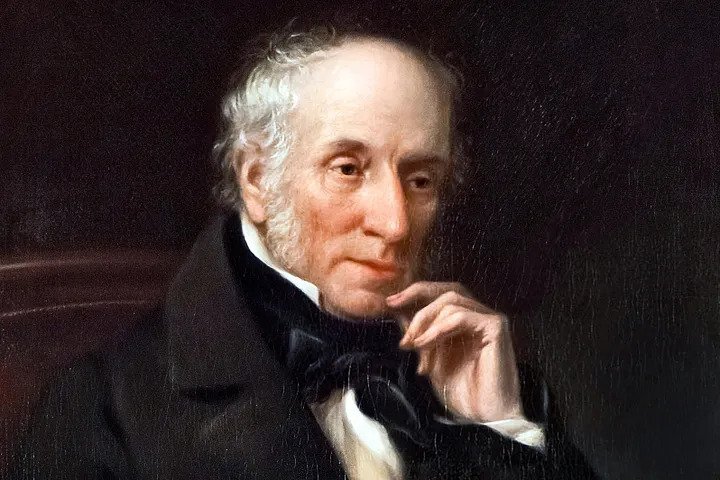Table of Contents
ToggleTop 10 Interesting and Lesser-Known Facts about the Romantic Age
The late 18th and early 19th centuries saw a significant change in literary themes and techniques during the Romantic Era in English literature. Romanticism, which emphasized emotion, nature, and individualism, was a reaction to the inflexible formalism of the Neoclassical period that came before it.
Poets like John Keats, Lord Byron, Percy Bysshe Shelley, William Wordsworth, and Samuel Taylor Coleridge are important characters of the Romantic Era. These authors wrote on their own feelings, the wonders of nature, and their interest in the sublime and paranormal. Co-written with Coleridge, Wordsworth’s Lyrical Ballads (1798) is frequently cited as the origin of English Romanticism.
Romantic literature frequently reflected intense emotional reactions to life’s experiences and praised the individual’s relationship to nature, as demonstrated by Wordsworth’s attention to the rural scene. By criticizing social conventions and praising freedom, Shelley and Byron, on the other hand, embraced radical ideas.

In this article, we will explore 10 lesser-known facts about the Romantic Age in English literature
1. The Term “Romanticism” Wasn’t Coined Until….
Even though the late 18th and early 19th centuries are now referred to as the “Romantic Age,” the authors and poets of that era did not identify as “Romantics.” As a matter of fact, the literary trend known as “Romanticism” wasn’t named until much later. It first appeared as a retroactive description in the second half of the 1800s, when academics and critics examined the works created during that time.
Although many writers of the time affiliated with different literary trends, none of them called themselves Romantic writers. Critics later coined the phrase after noticing the recurrent themes of emotion, nature, and imagination that characterized the works of that era. This belated designation implies that many Romantic poets did not view their writings as belonging to a unified movement even during their lifetimes.
2. The Romantic Movement Was a Reaction to Enlightenment
The fact that Romanticism was mostly a reactionary movement against the Age of Enlightenment is one of the most fascinating—and frequently disregarded—facts about the movement. In the 18th century, European thought was dominated by the Enlightenment, which placed a strong emphasis on reason, logic, and empirical evidence. Philosophers who supported reason and scientific progress, including Voltaire, John Locke, and Immanuel Kant, were its main proponents.
Romantic authors, on the other hand, disagreed with these principles since they thought that human feeling, creativity, and spirituality were sacrificed in favor of reason in the Enlightenment. The majestic beauty of nature, individualism, and intuition were all valued by romantic poets. What distinguished and defined the Romantic movement was its opposition to the inflexible intellectualism of the Enlightenment.
3. Women Played a Significant Role in Romanticism
Women contributed significantly to the creation of Romantic writing, while frequently being overlooked in favor of their male counterparts. Though possibly the most well-known female Romantic writer is Mary Shelley, the author of the classic “Frankenstein,” she was by no means the only one to make significant contributions.
William Wordsworth’s sister, Dorothy, was a talented poet and diarist in her own right. Despite not pursuing publication, several of her brother’s most well-known works drew inspiration from the entries in her journals. Dorothy’s personal observations of human emotions and the natural world connected with the core ideas of Romanticism.
Other significant female writers of the era were Anna Laetitia Barbauld, renowned for her political and philosophical poetry, and Charlotte Smith, whose nature poetry anticipated Romantic themes. Frequently disregarded, their contributions had a crucial role in molding the concepts and beliefs of the Romantic Era.
4. The French Revolution Had a Big Impact on Romanticism
Romantic writers were greatly influenced by the French Revolution (1789–1799), as many of them were first moved by its principles of liberty, equality, and fraternity. At first, poets like Samuel Taylor Coleridge and William Wordsworth backed the revolution because they believed it would triumph the human spirit over oppression.
But many Romantic writers lost hope as the revolution spiraled out of control, leading to the Reign of Terror and Napoleon Bonaparte’s ascent. Their paintings clearly demonstrate this change in viewpoint. For instance, Wordsworth started out as a revolutionary poet but eventually changed to a more conservative viewpoint as a result of his dissatisfaction with the bloody results of the revolution.
Romanticism’s emphasis on human freedom, natural rights, and the struggle between liberty and tyranny can be linked to the French Revolution’s early effect.
5. The Sublime Was a Central Concept in Romanticism
Even though it is frequently disregarded in casual discussions of the era, the idea of the sublime is essential to comprehending Romantic literature. The term “sublime” describes awe, grandeur, and beauty in nature that is beyond human comprehension and arouses strong feelings. Romantic writers frequently concentrated on the untamed, wild parts of nature in their attempts to convey the sublime.
The poetry “Mont Blanc” by Percy Bysshe Shelley, for instance, depicts the grandeur of the Alps and the poet’s sense of amazement and surprise at the immensity and strength of nature. Likewise, William Wordsworth’s “Tintern Abbey” skillfully combines introspection with the grandeur of the surroundings to convey the deep emotional reaction to the natural world.
The Romantics’ conviction that nature has the capacity to evoke profound emotional and spiritual experiences was symbolized by the sublime, which was more than just a literary construct.
6. Romanticism Embraced the Supernatural and the Gothic
The Romantic Era was profoundly enthralled with the Gothic and the supernatural, while being most commonly linked to a love of the countryside and the natural world. Themes of the unknown, unsettling, and horrific were explored in the writings of authors including Mary Shelley, Lord Byron, and Samuel Taylor Coleridge.
One of the best examples is Coleridge’s “The Rime of the Ancient Mariner,” which tells a chilling story about guilt, atonement, and the enigmatic powers of nature by fusing Gothic motifs with paranormal happenings. Comparably, the titular character of Lord Byron’s narrative poem “Manfred” engages in eerie, mysterious rituals and interacts with spirits as he ventures into the otherworldly.
A subset of Romanticism known as the Gothic explored terror, death, and the supernatural in ways that both horrified and captivated readers by bringing attention to the darker side of human emotion and nature.
7. The Industrial Revolution and Romanticism
Romanticism emerged at the same time as the Industrial Revolution, which was characterized by fast urbanization and technological growth. The repercussions of the Industrial Revolution on society and the natural world frequently severely upset Romantic writers, even though many hailed it as a sign of progress.
For example, William Blake bemoaned in his poems the devastation of the natural world and the dehumanization of the working class. His well-known poem “London” presents a depressing image of city life, depicting the metropolis as a haven of injustice and misery. On the other hand, Wordsworth and other poets’ pastoral settings convey their want to revert to a more straightforward, peaceful coexistence with nature.
One of romanticism’s most enduring legacies is its critique of industrialization, which brought to light the tension that exists between the advancement of technology and the preservation of the environment—an issue that is still relevant today.
8. The Impact of Nationalism and Folk Culture in Romanticism
A lesser-known facet of the Romantic Era was its acceptance of nationalism and folk culture. Romanticism drew influence from ancient folktales, ballads, and traditions while simultaneously celebrating the individual and the ordinary man. The resurgence of folk culture was a component of a larger nationalist movement in which authors attempted to identify and commemorate their own national identities.
German folktales were gathered and published by the Brothers Grimm in Germany, and as a result, they played a crucial role in the development of German Romantic literature. Sir Walter Scott used Scottish and English history and folklore in his historical novels, like “Waverley” and “Ivanhoe,” to instill a sense of patriotism in the English people.
Romanticism’s fascination with folk culture and nationalism was not limited to literature; it also represented the social and political transformations that followed the Napoleonic Wars and the emergence of nation-states in Europe.
9. The Connection Between Romanticism and Science
The link between Romanticism and science is more nuanced than it first seems, despite the fact that it is frequently perceived as being in opposition to the scientific rationalism of the Enlightenment. A great deal of Romantic literature drew inspiration from scientific findings, however, in ways that stressed the wonder and mystery of the natural world over its logical explanations.
For instance, Mary Shelley’s “Frankenstein” examines the boundaries of human knowledge as well as the moral and ethical ramifications of scientific experimentation. The book engages current discussions concerning galvanism—the use of electricity to stimulate muscles—and the potential for resurrecting the dead, as well as the risks associated with unbridled scientific ambition.
Similar to this, Samuel Taylor Coleridge wrote about scientific ideas and had a strong interest in natural philosophy, but he frequently tried to reconcile these ideas with a spiritual view of the cosmos. The Romantics’ interest in science is a reflection of their larger desire to unravel the secrets of existence, the cosmos, and the human soul.
10. Eastern Philosophy’s Impact on Romanticism
The impact of Eastern philosophy on some of Romanticism’s major personalities is a little-known but fascinating feature of the movement. These concepts started to seep into Romantic thought as European intellectuals came into contact with the philosophical and religious traditions of China, India, and the Middle East.
One person who was greatly impacted by the metaphysical concepts present in Indian philosophy is Samuel Taylor Coleridge. The poet’s preoccupation with the spiritual and the sublime is evident in his poem “Kubla Khan,” which describes the construction of a beautiful palace in an exotic Eastern setting.
Romanticism’s wider disapproval of Western materialism and rationality included an interest in Eastern philosophy. The Romantics looked for new perspectives on the world, and they discovered ideas in Eastern philosophy that aligned with their own views on the strength of imagination, intuition, and the spiritual bond that unites all living things.
Conclusion
In English literature, the Romantic Era is a rich and varied era full of inconsistencies, nuances, and little-known details that broaden our perspective on the authors and their works. Romanticism is still a vibrant and significant literary movement in the history of literature, having evolved from its opposition to the Enlightenment to its acceptance of the sublime, the paranormal, and even Eastern philosophy.
We may fully understand the breadth of Romanticism’s contributions to literature, society, and ideas by delving into these lesser-known facets of the movement. Wordsworth‘s poems, Mary Shelley’s novels, and the political activism of female writers like Anna Laetitia Barbauld are just a few examples of how the Romantic Era’s passion, inventiveness, and deep engagement with the human condition continue to inspire readers and writers today.

